How to glue polystyrene foam to different surfaces: connection features, adhesive compositions
As soon as repair work begins, they are often faced with the problem of how to glue the foam.There are several ways to securely secure the material. You can use both adhesive mixtures and liquid nails. Before installation, study the description and characteristics of each solution or adhesive.
The content of the article:
Features of the material
Polystyrene foam is an environmentally friendly building material that is used for insulation. It is considered inexpensive compared to other similar building materials. It is used in construction and renovation work for the purpose of heat and noise insulation, since it has a low level of sound and heat conductivity.
The material is lightweight because it is almost 98% air, so it is easy to work with. Thanks to its light texture and structure, excess foam is removed using cutting tools, without leaving sloppy joints.
The foam is supplied to the plant in special tanks with a dispenser. Foaming occurs through them. At first it has a viscous texture, and then it begins to harden and becomes dense. But at the same time it remains pliable, so it is easy to process and apply to unfilled areas. Hardens at room temperature.
Polystyrene foam is produced from different types of plastic. But its content in the composition does not exceed 2%, since the rest is taken up by air.The service life is 15-70 years, depending on the manufacturer, operating conditions, and application methods.
Polystyrene foam has its own advantages, which are highlighted by builders and people involved in repair work.
| Processing, use | Easily processed, amenable to change in shape. It is easy to cut it according to the required pattern. |
| Density | Despite its light texture, it has a high density. |
| Resistance to temperature conditions | Retains its shape at temperatures from -160 to +75-80 ˚С. Therefore, it is used both for outdoor construction work and interior decoration. |
| Ecologically pure | Polystyrene foam does not emit chemical compounds or toxic substances. It can be used safely in any environment, including confined spaces. |
| Heat and sound insulation | Due to its texture and composition, it has a low level of heat and sound conductivity. Therefore, thermal layers are made from foam plastic to insulate rooms while creating sound insulation. |
| Price | The price is not more expensive than its analogues. They are used in most construction and finishing works by both individual entrepreneurs and companies. |
But, in addition to the advantages, polystyrene foam has disadvantages. They are also taken into account in order not to miss the deadlines for repair work and to complete it in accordance with all requirements.
| Strength | The surface, even after complete hardening, is subject to mechanical damage. After installation, it is necessary to additionally cover it with protective structures. |
| Susceptible to destruction by chemicals | Since polystyrene foam is to some extent plastic, but at the same time consisting of 98% air, it is exposed to “chemistry”. The material is destroyed upon contact with coloring compounds, varnishes, and acetone. |
| Structure, porosity | Due to these qualities, the product is airtight. Therefore, it is additionally necessary to provide the building or other structure with ventilation equipment to ensure constant circulation in the room. |
| Additional processing | To glue foam to other surfaces or apply plaster to it, you need to cover it with an additional protective layer. Only after this will there be a guarantee that the insulation will last in accordance with the established expiration date. |
Despite the presence of shortcomings, polystyrene foam is actively used in the field of construction and repair. Its technical characteristics, along with its price, make it an affordable material for all types of finishing work.
Main - choose the right type of foam, purchase the appropriate installation kits and tools for it. In-store consultants will provide assistance.
The quality of installation is also affected by the mixtures used to glue the foam boards. For example, adhesive mixtures, solutions. Their composition determines how firmly it can be glued and how long the foam plastic will last, the final form of the finished surface after completion of construction work.
Therefore, when choosing and purchasing glue or mixtures to glue foam boards to other textures, it is necessary to take into account the description and characteristics of the products. It is recommended to purchase only certified mixtures to avoid damage to both the foam itself and the insulated surfaces.
Types of adhesives
The composition should be selected based on the material to which the foam sheet is planned to be glued. They take into account the surface, preliminary preparation, desired service life, and other conditions.If you need to glue thermal insulation to different structures, it is worth using several types of compounds. The installation method, operating conditions, and shelf life of the structure will depend on this.
Dry mixes
Many people use dry mixtures that are diluted with water and take the form of a liquid adhesive. They are applied to walls using special tools with or without pre-treatment. Dry mixtures are used to glue foam to concrete, for example. The composition includes substances such as cement, polymers, sand. By combining them, an adhesive texture is achieved to evenly adhere the insulation to the wall.
Advantages of dry mixes:
- Reliable fastening. The diluted adhesive interacts well with different surfaces and is especially strong during pre-treatment. It can be glued to concrete, cement, even walls covered with plaster.
- Alignment. You can additionally level the relief of a wall or surface. Therefore, during finishing work, if you glue the canvas, leveling the distortion with glue, many of the shortcomings of the previous stages of repair are hidden.
- Affordable price.
- Temperature resistance.
But the material also has disadvantages. These include the additional work required to achieve a strong bond. While working with the material, dust and dirt will form around. It is also important to stir the dry mixture in the correct proportions to obtain the desired consistency.
Liquid preparations
When choosing what to glue the foam with, liquid mixtures are also used. They provide reliable grip. But it is important to ensure that there are no chemical components that cause the destruction of the foam.
To firmly glue the foam board, it is worth purchasing liquid nails. They have this name due to their technical characteristics. They sell liquid nails in different formats: tubes, jars, etc. They are applied pointwise to the places where the prepared parts should be glued. Thanks to them, you can attach foam to tiles, ceilings and other surfaces.
Purchase a silicone-based sealant. It can be used to glue foam boards to thin, flat surfaces. It is evenly distributed over the area and ensures reliable adhesion of the elements. If you glue it carefully, it will not be visible on the walls.
Important criteria for choosing adhesive
There are several criteria for choosing an adhesive, which will determine how firmly the building material can be glued. Therefore, you need to pay due attention to this. Moreover, there are video instructions, selections on certain compositions, where you can find out the characteristics and descriptions of each of them.
Area of application of the material
Since polystyrene foam is used everywhere, there are whole selections of adhesive compositions to choose from. For example, it is not recommended to buy inexpensive dry mixtures to glue insulation to a thin surface. It is worth using PVA if the goal is to make a craft or interior detail. It is suitable when it is decided to glue the insulation to the wood.
This adhesive mixture provides reliable adhesion to paper or cardboard, so it will cope with its functions at home. But PVA does not guarantee the strength and indestructibility of the structure, so mechanical damage leads to failure.
Manufacturer specifications
Polystyrene foam has a wide range of applications; the characteristics of adhesive compositions also differ under different conditions of their use. It is necessary to study the labels of mixtures before purchasing them. They contain materials with which the composition can be used. For example, on polyurethane foam or liquid nails it is indicated whether they can be used to glue foam to metal, wallpaper, or iron.
Application method
The adhesive can also be applied in several ways. For example, PVA glue is sold in a convenient jar with a dispenser. But many additionally use brushes. Polyurethane foam is sold in special containers with a dispenser, which also simplifies its use. Dry mixes come in jars where they can be stored or mixed for use.
Some also use fixing dowels. They additionally secure the foam board and make the structure more stable. But they can only be used in conjunction with adhesive materials to ensure strength and reliability of the finish.
There is also a special mastic that resembles a thick paste. It is more expensive than other mixtures, but it has less consumption. Additional construction tools will be required to apply the paste.
Composition of the drug
When choosing a drug, you should consider its composition. Sometimes manufacturers add substances to it that destroy polystyrene foam compounds. For example, these are alcohols, acetone or other chemical activators. They “burn through” the material, causing holes to form in it. Foam plastic cannot be restored, so if it is damaged, you will have to completely replace the slab.
How to glue foam together
Foam can be glued together; there are even separate tips for this.For example, you can use dry adhesive mixtures. But the packaging must indicate that they are intended for gluing foam, otherwise they will not be able to hold the parts together.
Liquid nails will also help to glue foam boards, but pointwise or linearly. You can use polyurethane adhesives, because they are resistant to weather conditions and can be used for both external and internal finishing work. But at the same time, it is better to work with them at above-zero temperatures, because in the cold the composition quickly thickens and loses its properties.
Some people use PVA glue to glue foam surfaces. It can be used at home for interior decoration, decoration, and other small items. It is rarely used in construction work due to insufficiently reliable installation characteristics.
How foam is glued to different surfaces
Polystyrene foam is used in various fields. Sometimes it can be seen at home in arts and crafts, during construction or finishing work when insulating the facade of a building. To bond foam to other surfaces, it does not need to be processed. But walls or ceilings should be additionally plastered or degreased for more reliable adhesion. However, this is not the main thing - it is important to choose the right adhesive composition without chemical impurities that cause destructive harm to the material.
How to glue foam plastic to concrete structures
Concrete structures must first be treated. If they are uneven, plaster, sand, removing surface imperfections. Before applying glue, the concrete should be cleaned of dirt and dust, as they impair the process of connecting parts to each other.The composition can be applied pointwise, over the entire surface or in a zigzag. Sometimes the structure is additionally fixed with fasteners.
How to glue foam to brick walls
Brick walls are treated in the same way as concrete. They are prepared in advance: primed, sanded, dust and dirt are removed. Next, the adhesive is applied to the foam layers and applied to the surface. Fasteners are used for fixation. The material sets in a couple of minutes, so during this time it is important to press it firmly against the wall.
How to glue foam to metal
To bond foam to metal, the surface does not need to be further processed. It is necessary to degrease it and remove all dirt. After this, you can apply an adhesive or other composition to ensure reliable adhesion to the surface.
How to glue foam to wallpaper
Foam plastic can be glued to wallpaper using any mixtures, including PVA. To do this, it is important to apply glue to the entire gluing area and even out the bends. After drying, the structure can be used for further finishing work.
Thus, we can conclude that foam plastic is a material used in finishing. To obtain a durable connection, select the correct adhesive composition, applying it in accordance with the recommendations and instructions.
How do you plan to glue the foam, to what surfaces? Share the link on social networks and bookmark the article.
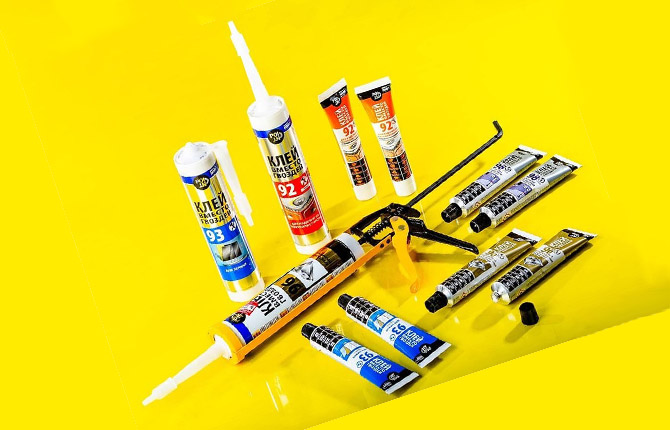
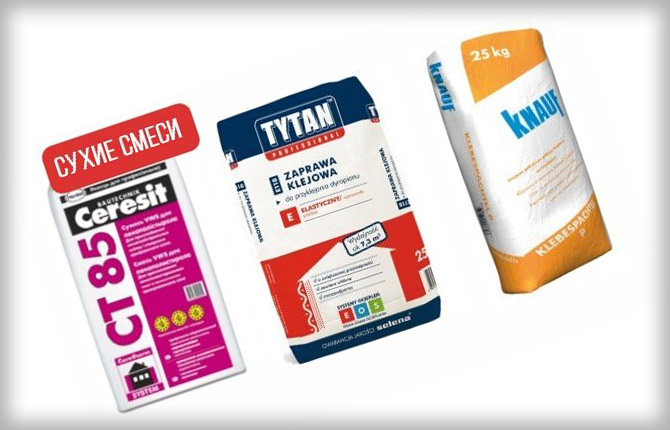
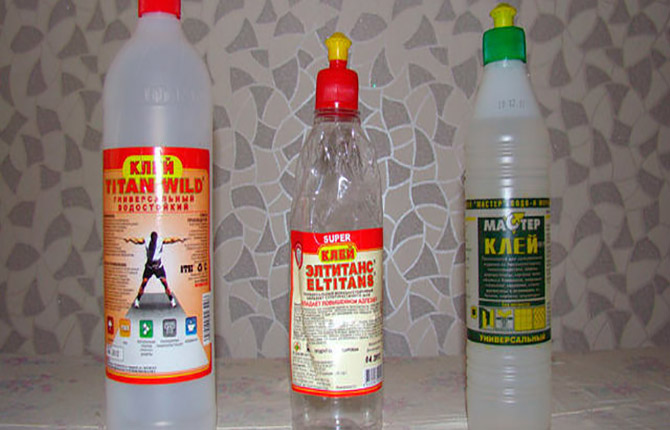

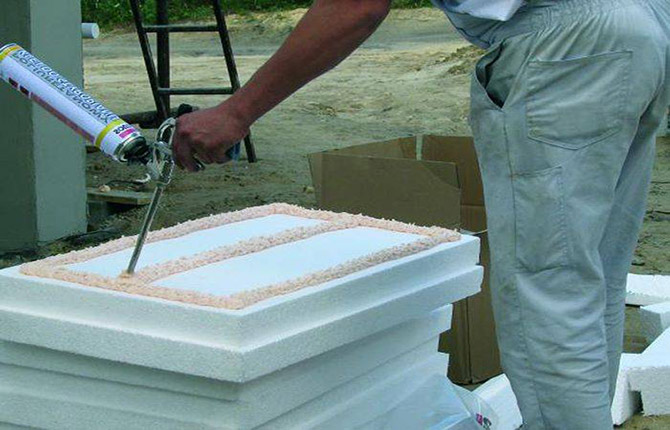

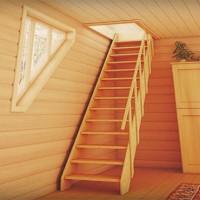
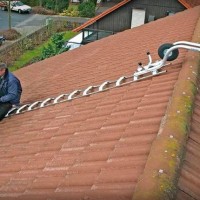
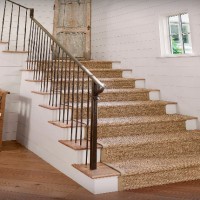
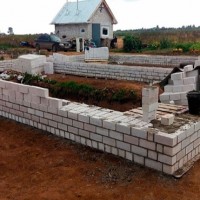
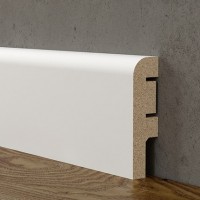




I wanted to glue PVA directly onto the wallpaper, but they advised me to tear off the paper, putty the walls and put it on tile adhesive.
I have clapboard walls. I think it will be enough to apply PVA. And, of course, glue the joints between the foam boards.
I plan to glue 5 mm thick foam plastic boards to the cleaned blocks using construction adhesive. I'll post as soon as I finish the installation.